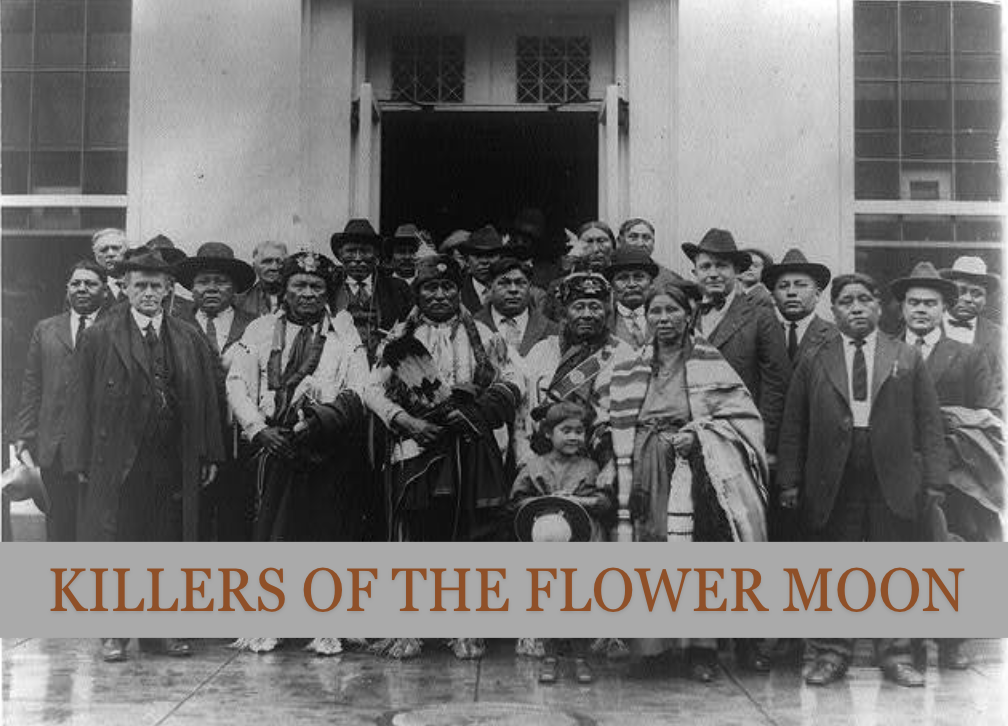“Killers of the Flower Moon,” the latest epic from Martin Scorsese, is in theaters now starring Leonardo DiCaprio, Robert De Niro, and Lily Gladstone.
“Killers of the Flower Moon” is a film that demands the audience’s attention from its introduction of the Osage Tribe, which it follows the entire film, until its end. Martin Scorsese’s 206-minute epic does feel its length, but that is one of its beauties. The story never drags and the world of the Osage Nation is built through each immaculate detail the viewers feel as if we are witnessing the horrors unleashed on the Osage people along with them. But we are provided a behind-the-scenes tour of how evil is unleashed so viewers too feel complicit.
The story Scorsese tells is one that he has been interested in since his career’s earliest days: evil and the underbelly of America that allows it to thrive. What allows this story to thrive, however, is the cast. The ensemble is nothing short of phenomenal.
De Niro’s performance was utterly terrifying in its authenticity. His character, William ‘King’ Hale, is the one who drives the plot into action, manipulating DiCaprio’s Ernest Burkhart into action – he casually portrays evil. Without delving much into plot specifics, the nature by which De Niro plays the character is the most terrifying aspect of all and makes him seem almost recognizable. not recognizable in the fact that we may know men who perpetrate evil as he does, but recognizable that evildoers are all around us, hidden under the guise of social acceptance.
Leonardo DiCaprio’s Burkhart, the main character of the story, was unlike any character he has played. DiCaprio’s performance was amazing, holding the audience in the grasp of his hand with his charisma (and stupidity of the character). DiCaprio has built so much goodwill with audiences over the past decades that it was impossible not to see glimpses of a good heart in this character who was so clearly perpetuating pure evil.
Among the acting ensemble, it would be remiss not to mention Lily Gladstone’s star turn as Mollie Burkhart, Ernest’s wife. Gladstone possessed a natural stoicism and contempt for the world around her as the titular killings of the flower moon unfolded. Gladstone was the soul of this film, a vessel that the viewer could latch their empathy for the Osage Nation. Gladstone managed to perform on par with DiCaprio and De Niro with ease because she was not trying to out-act or make a show for her character. Gladstone defines Mollie as a character who will not put up with any schemes of others, yet is also how the viewer can understand the tragedy happening to the Osage people.
The Osage Nation were victims, but as the story unfolded, it was clear what was happening to the Osage was not an isolated incident or a one-off mishap because of the characters presented in the film. Scorsese’s films often depict amorality in ways that characters become involved in through choice or by being roped in through the work of others. While Hale manipulates Burkhart throughout the film, I argue that it is not through choices that evil is presented through “Killers of the Flower Moon,” the whole setting is depicted as stunningly despicable.
Scorsese, at 80 years old, is clearly in the twilight of his impressive career. There was a sense of frustration and deep introspection, as if one of our greatest living directors wanted to explore the root of the question of what makes so many of his films iconic. How are people drawn to wicked acts, and how can they be corrupted?
There are no easy answers at the end of the film, but that is what worked so well. Corrupted people will prey on the misfortune of others to benefit themselves at each opportunity they have. What happened to the Osage Nation is the repeating story of America; the groups who have not felt welcome throughout the last few centuries were never supposed to feel welcome because that is what America is, and has always been. The ruling classes decided who they wanted in their portrait of the United States and expected no consequences for the routes in which they would reach their “Ideal America.”
To understand a masterful examination of the evils of America, go to your local theater and see “Killers of the Flower Moon” now.


